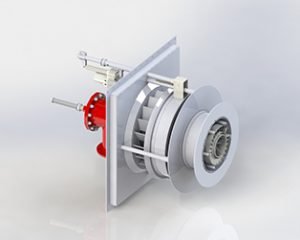Combustion Controls: Burners, Retrofits, & Fuel Conversions
Burners Retrofits, Upgrades & Fuel Conversions
 EES’ STEP Combustion is a provider of best-in-class burners and retrofits for new and existing coal, gas, oil or biomass fired equipment. Our Variswirl© burner line is USA engineered, designed, and fabricated multi-fuel capable burners and burner upgrade kits. Variswirl© burners can be provided in sizes ranging from 10 to 300MMBtu/h for a wide array of fired equipment (boilers, heaters, cracking units, etc.), serving a vast customer base in power, mining, industrial, marine, institutional, and more.
EES’ STEP Combustion is a provider of best-in-class burners and retrofits for new and existing coal, gas, oil or biomass fired equipment. Our Variswirl© burner line is USA engineered, designed, and fabricated multi-fuel capable burners and burner upgrade kits. Variswirl© burners can be provided in sizes ranging from 10 to 300MMBtu/h for a wide array of fired equipment (boilers, heaters, cracking units, etc.), serving a vast customer base in power, mining, industrial, marine, institutional, and more.
New and upgraded burners have also been provided for wall, opposed, and tangentially fired boilers, package boilers, heaters, dryers, and other applications. Upgrades are very economical and a fraction of the cost of new burners due to STEP Combustion’s expertise in air registers, combustion air control and balancing.
STEP’S Technology For Burner Retrofits
- After an initial feasibility review, a full evaluation (aerodynamic, fluid dynamic, geometric) of the existing burner is performed to establish baseline operating conditions and to facilitate the retrofit design and application
- Hardware is designed to suit the existing equipment, avoiding unnecessary expense and extending the life
- Emissions requirements can often be attained through retrofit of aerodynamic and injection hardware alone
Fuel Conversion
Through burner replacement or retrofit, STEP designs, engineers, and supplies gas and multiple fuel conversion burner kits that enable co-firing and complete fuel conversion applications with sizes ranging from 10 to 300 MMBtu/hr. For retrofits, STEP begins with an analysis of the existing burner including: aerodynamic model of the combustion air, computational fluid dynamics (CFD) combustion model, as well as fluid dynamic models of the fuel delivery equipment. These capabilities are particularly important when upgrading older equipment.
